Table of Contents
Power Plate and Bone Density
What is the relationship between the Power Plate and bone density? Will the Power Plate increase your bone density or your bone quality? Are Power Plate osteoporosis exercises safe and effective?
This post will address each of these questions.
If you are new to vibration platforms, I encourage you to read an article on Whole Body Vibration (WBV) platforms. The article discusses recent research showing that using low intensity vibration will improve the health and quality of your bones, while high intensity whole body vibration platforms, like the Power Plate, pose a risk to bone health.
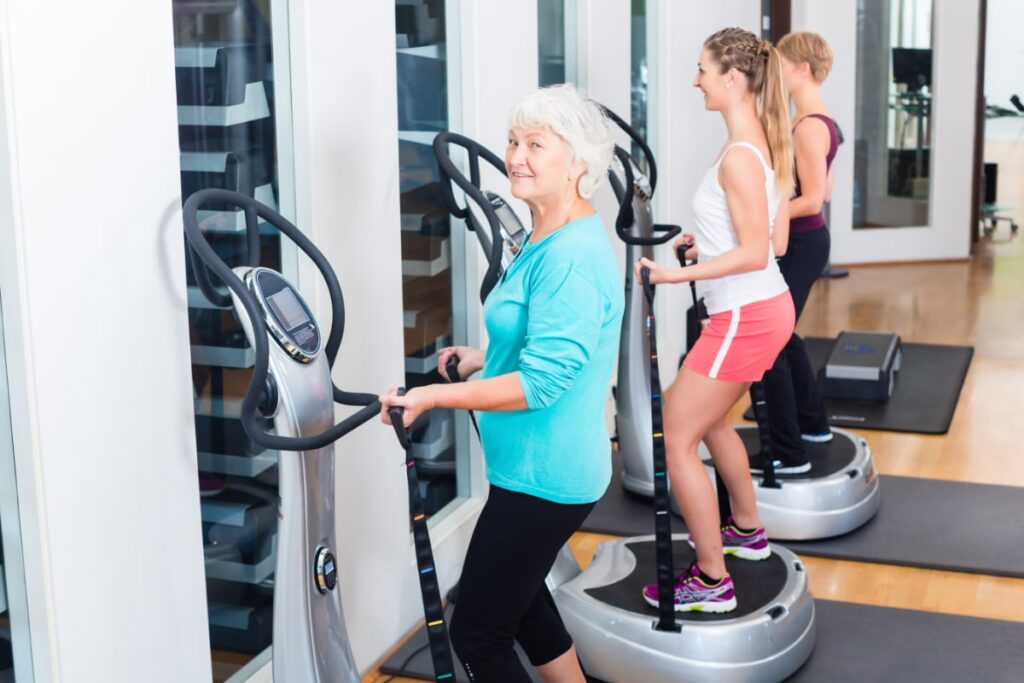
Power Plate and Bone Health
Power Plate claims on its website (under Bone Health) that “Power Plate training leads to a significant increase in hip area bone density.” They refer to a study (1) published in 2004 in the Journal of Bone and Mineral Research to support this statement.
Here is an overview of the study protocol.
Ninety postmenopausal women participated in the study. During the 24-week study period, the researchers created three groups of people for the tests.
- The Power Plate (PP) group performed exercises on the Power Plate.
- The resistance group performed aerobic exercises and resistance exercises without the Power Plate.
- The Control group did not exercise.
The study claims that Power Plate training resulted in a 1.5% net improvement in bone density in the hip for the PP group compared with the resistance and control groups.
Does the Power Plate Increase Bone Density?
I reviewed the published study in detail and found that the researchers gave the resistance group a substantially different exercise program than the PP group.
The exercise program that they gave the Power Plate group was more favorable for bone-building compared to the exercise program that they gave to the Resistance group.
The reason the Power Plate group showed an increase in hip bone density over the study period compared to the other groups was not due to the benefits of the PPVP. It was a result of the exercise program that they followed.
Power Plate Osteoporosis Exercise Routine
The Power Plate group was assigned an osteoporosis exercise program that involved progressive weight bearing exercises.
- The study did not specify the precise number of sets or repetitions involved, but they did mention that the PP group, unlike the Resistance group, was encouraged to consistently increase their load. Progressively increasing exercise load promotes bone-density improvement. This was not done for the Resistance group.
- Exercises for the PP group included a variety of weight bearing exercises such as lunges and squats. The Resistance group did not perform weight-bearing exercises.
- Training load for the PP group was increased by changing the execution form of the exercises from predominantly two-legged to one-legged exercises. By making the PP participant stand on one leg, the researchers doubled the load on that leg. This was not done with the Resistance group participants.
- The training program for the PP group included a wider variety of exercises. By introducing variety to the exercise program for the PP participants, they stimulated bone development. Variety was not included for the Resistance group participants
Resistance Group Osteoporosis Exercise Routine
The Resistance group did not follow the same osteoporosis exercise program as the PP group. The exercise program for the Resistance group consisted mostly of endurance training and non-weight-bearing exercises.
- Endurance sets were used for more than half the duration of the study. Endurance training, specifically high-intensity endurance training, has not been shown to build bone.
- Unlike the PP group, there was no variety in the types of exercises used. Studies have shown that bones and muscles need to be surprised with variety in order to build.
- Seated strength exercises were employed. Seated exercises are not considered weight bearing exercises.
I have summarized the exercise programs below (in as much detail as the researchers provided in the published study).
Resistance Group Exercise Program
- A 20 minute warmup of stepping, running, or cycling.
- Knee extensions on a leg extension machine and a leg press machine.
- The first 14 weeks of the program progressed as follows:
- 2 sets of 20 reps to
- 2 sets of 15 reps to
- 2 sets of 12 reps to
- 2 sets of 10 reps to
- 2 sets of 8 reps
- During the last 10 weeks training, volume and intensity varied between 2 sets of 8 reps to 2 sets of 12 reps
The researchers mention that the Resistance group program lasted an hour in total, but aside from the above, no details of how the hour was spent are mentioned. There must have been very long rest periods between sets.
Power Plate and Resistance Groups
The Power Plate group followed a completely different exercise program from the Resistance group. The training volume of the Power Plate group increased systematically over the 6 month training period by:
- Duration of the vibration sessions.
- The number of series of one exercise.
- The number of different exercises.
- Reduction of the rest period between the exercises.
- Increase in the amplitude and frequency of the vibration platform.
In addition, training load was significantly increased by moving the exercises from predominantly two-legged exercises to one-legged.
Advantage: Power Plate Group
The PP group had an advantage over the Resistance group, not because they used the Power Plate Vibrating Plate, but because they followed an exercise program that promoted bone-density improvement.
Power Plate and Osteoporosis: Safety Concerns
I recently interviewed Dr. Clinton Rubin, the SUNY Distinguished Professor of Biomedical Engineering and Director of the Center for Biotechnology at Stony Brook University in Stony Brook, New York. Dr. Clinton is the most cited researcher in the area of vibration therapy and bone health and a recognized world authority on the topic.
He has done studies looking at high intensity vibration and its affects on bone health. Dr. Rubin provides his perspective here:
Conclusion
This study failed to demonstrate that Power Plate training alone improves bone density or bone quality. Research has consistently demonstrated that it is the type and intensity of your exercise program that will dictate how much your bone density and quality improve over time.
I recommend that you follow an exercise program that promotes bone quality. Your program should also teach you movements that avoid fractures while doing your exercise program and daily activities. I encourage you to consult with a health professional qualified in this area.
Power Plate and Bone Density: A More Appropriate Study
A more appropriate study would be to have two groups perform identical progressive weight bearing exercises, with one group exercising on the Power Plate and the other group exercising on the floor.
The results of such a study would determine much more equitably whether the Power Plate is more effective in building bone than a program without the Power Plate.
Further Readings
References
- Sabine MP Verschueren et al. Effect of 6-Month Whole Body Vibration Training on Hip Density, Muscle Strength, and Postural Control in Postmenopausal Women: A Randomized Controlled Pilot Study. JBMR Volume 19, Issue 3, pages 352–359, March 2004

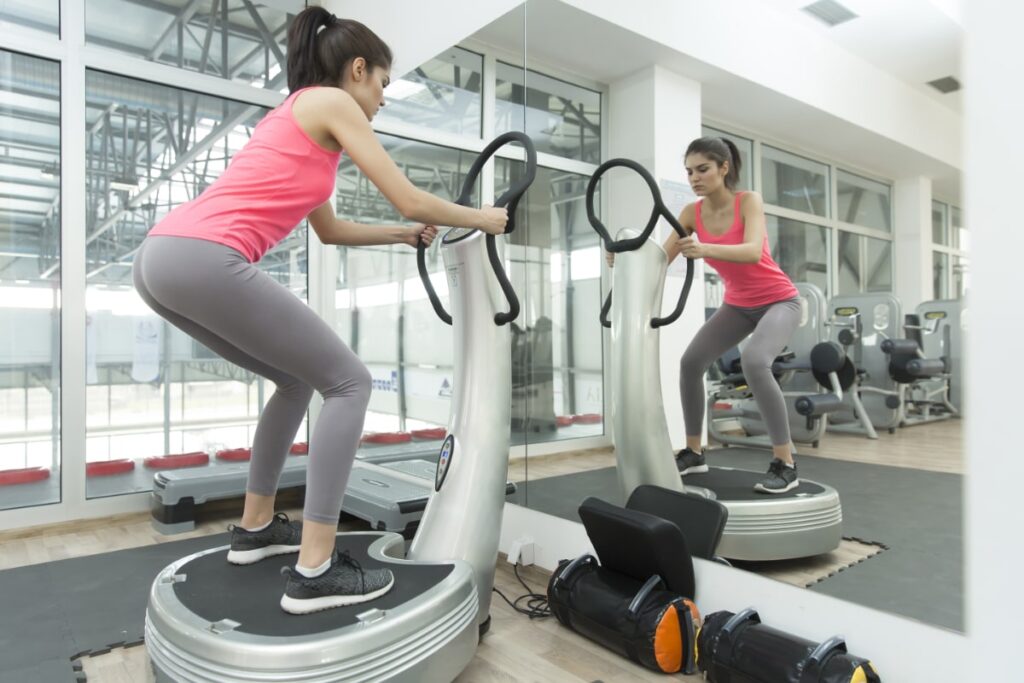

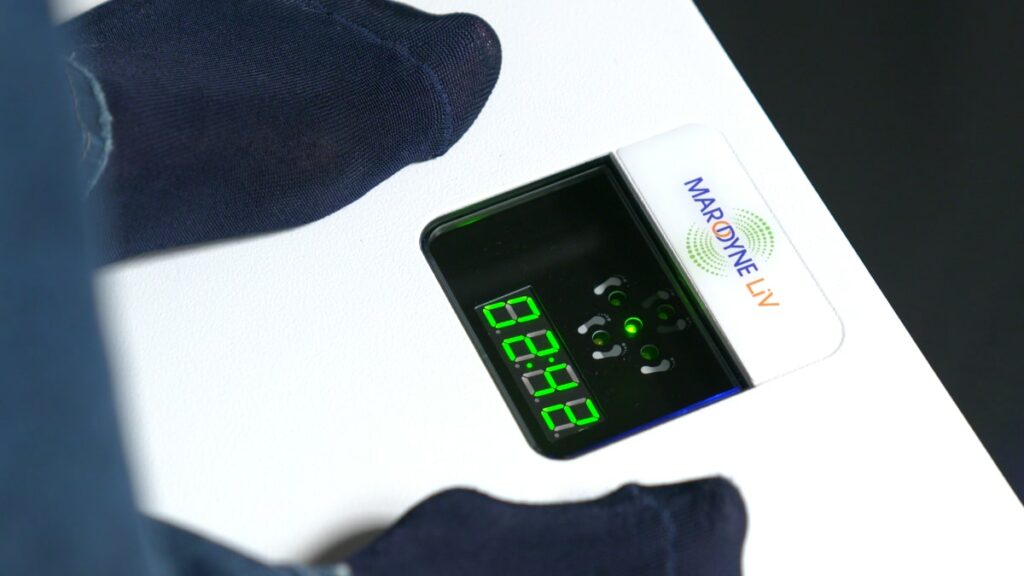
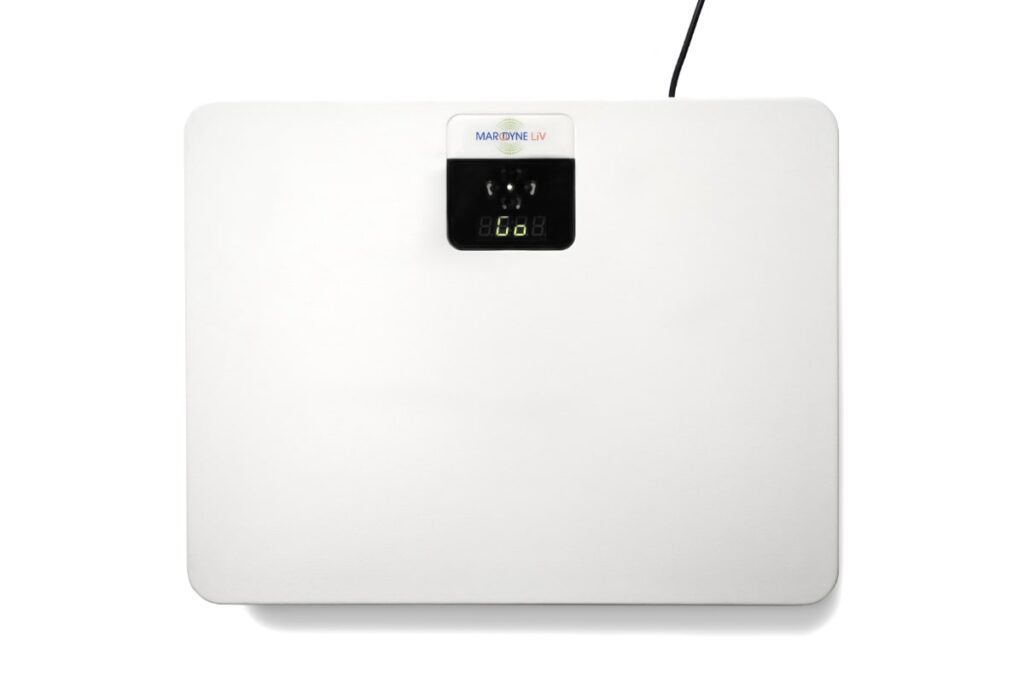
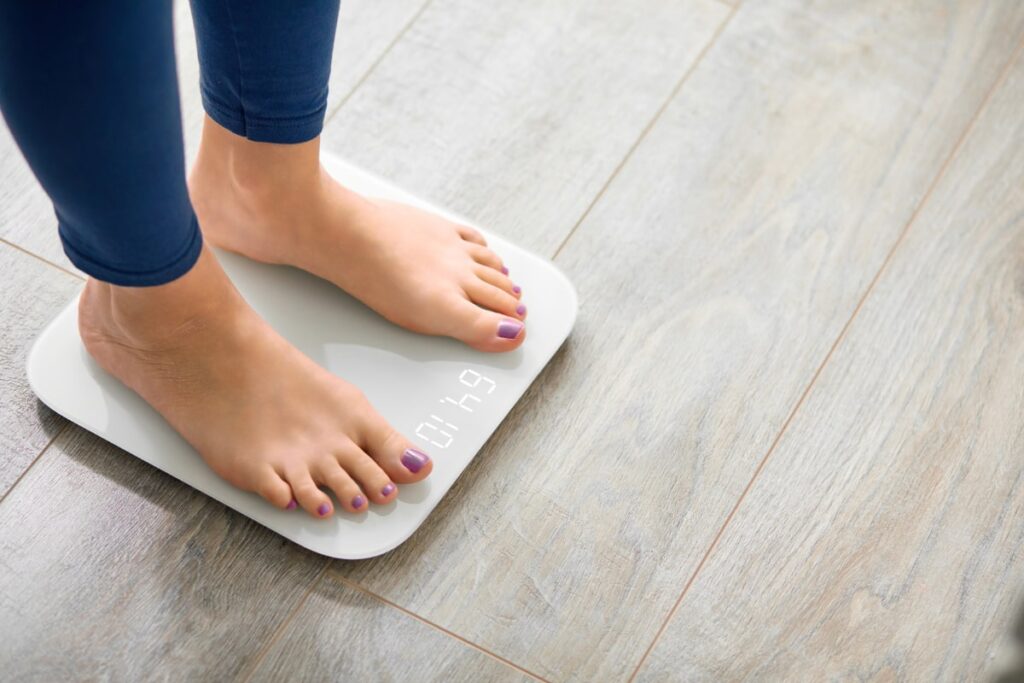

Comments
June 9, 2011 at 2:44pm
Elizabeth Stewart
Thank you for taking a closer look at the Power Plate study. I've recently incorporated 2 to 3 sessions a week on the power plate along with my melioguide workout and have included lunges and weights. I had read an article about the study and figured it couldn't hurt. Also, I recently heard that a new study will be taking place in London soon led by Dr. T. Palferman, consultant Rheumatologist at London Medical, 49 Marylebone High St. London, England W1U 5HJ. I hope he will take into consideration the issues you have pointed out. Personally, my main concern is that I'm not doing any damage to my bones with the power plate. If nothing else, my muscle strength seems to be improving but I'm sure that is also down to the overall programme I'm following with your guidance.
June 9, 2011 at 7:34pm
Margaret Martin replies
Hi Elizabeth, I am glad you are feeling stronger. If the Power Plate encourages you to work out then it is worth it! Although I have not looked closely at their all studies there evidence of benefit beyond bone building. Thank you for the information on Dr. Palferman's study I will send him a copy of my blog. Keep well.
June 9, 2011 at 7:08pm
Ruth Layberry
Thanks Margaret for this indepth report. I had recently seen a demonstration of one of these machines and wondered how the vibration would promote bone quality. Might appeal to people you really didn't like to work out and liked the novelty of this type of exercising.
Keep up the good work
Ruth